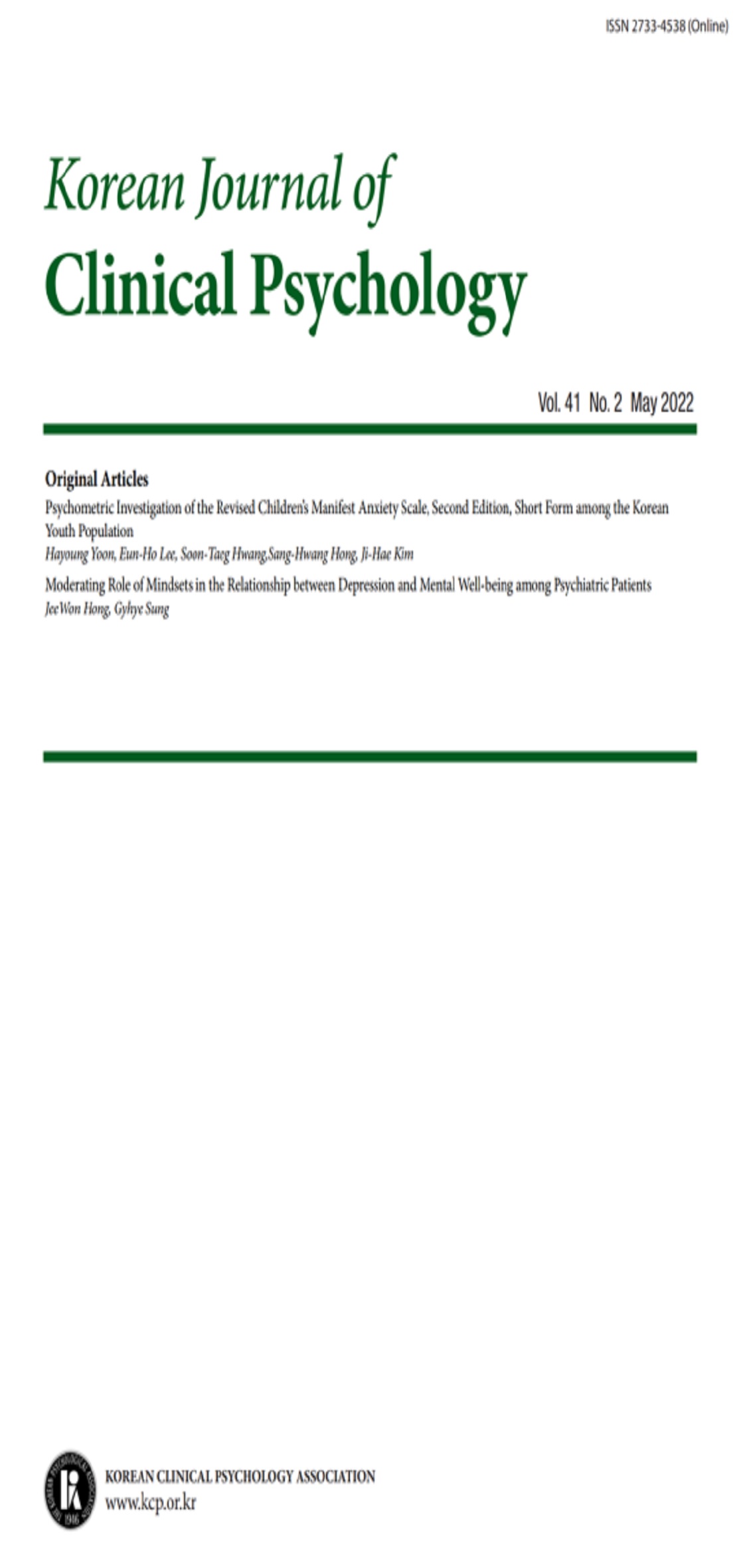open access
메뉴
open access
메뉴 E-ISSN : 2733-4538
E-ISSN : 2733-4538

본 연구는 외상성 뇌손상 환자와 정신분열증 환자의 WCST 수행에 나타난 인지기능의 특성을 살펴보고자 수행되었다. 이를 위하여 Heaton 등(1973)이 16가지 하위측정치로 확장시킨 WCST의 수행을 외상성 뇌손상 집단, 정신분열증 집단 및 정상인 집단간에 비교해 봄으로써, 두 환자군이 나타내는 인지기능의 결함을 비교하였다. 연구 대상은 외상성 뇌손상 환자 20명, 정신분열증 환자 20명, 정상인 20명이었다. 각 하위측정치에 대한 세 집단 간의 차이를 분석한 결과, 외상성 뇌손상 집단과 정상인 집단간에는 오류율, 보속 오류율, 개념 수준 반응율, 완성된 범주수, 학습에서 유의한 차이가 있었다. 정신분열증 집단과 정상인 집단간에는 오류율, 보속 오류율, 비보속 오류율, 개념 수준 반응율, 완성된 범주수에서 유의한 차이를 보였다. 그리고 외상성 뇌손상 집단과 정신분열증 집단간에는 비보속 오류율, 개념 수준 반응율, 학습에서 유의한 차이를 보였다. 이상의 연구 결과에서 외상성 뇌손상 집단은 비보속 오류보다 보속 오류를 더 많이 보여 보속적 경향성을 지니고 있지만 정신분열증 환자와 달리 현실적 맥락과 맞지 않는 일탈된 사고방식을 변화시키는 능력에는 결함을 보이지 않으며, 추상적 개념 형성은 정신분열증 환자에비해 덜 저하되어 있으나 학습 개념을 형성하고 논리적으로 분석하여 효율적인 학습 전략을 찾아 숙달하는 능력에서 정신분열증 환자와는 달리 결함을 지니고 있음을 알 수 있었다. 끝으로 본 연구 결과의 의미와 제한점 및 향후 연구에 대한 제안이 논의되었다.
The purpose of this study was identify cognitive characteristics of traumatic brain injured group(n=20) and schizophrenic group(n=20) in the Wisconsin Card Sorting Test(WCST). Their performances of the WCST were compared with normal control group(n=20). Administered WCST was revised and expanded in 16 subcategories by Heaton et al. (1993). The results of the study were as follows. First, there were significant differences between traumatic brain injured group and normal control group in performances of percent errors, percent perseverative errors, percent conceptual level responses, number of categories completed, and learning to learn. Second, there were significant differences between schizophrenic group and normal control group in performances of percent errors, percent perseverative errors, percent nonperseverative errors, percent conceptual level responses, and number of categories completed. Third, there were significant differences between traumatic brain injured group and schizophrenic group in performances of percent nonperseverative errors, percent conceptual level responses, and learning to learn. Finally, meanings, limitations and suggestions of the present study were discussed.
